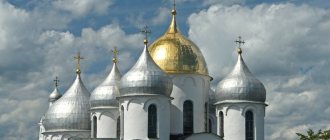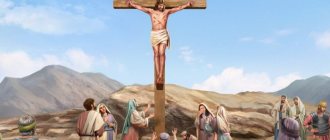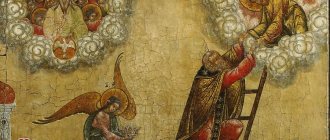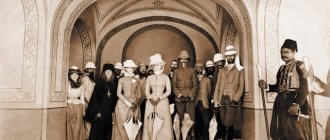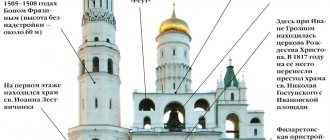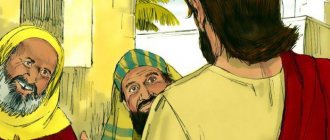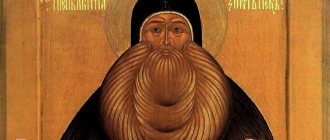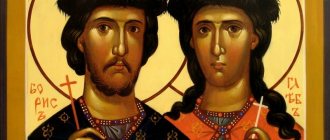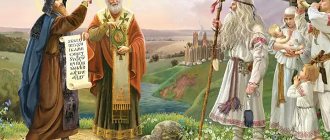What did Vasily Livanov have to do with the film, what scenes did the director cut out, and why was the film seen in France earlier than in the USSR.
The idea to make a film about the famous Russian icon painter belonged to actor Vasily Livanov, who dreamed of playing the role of Rublev. He shared his thoughts on this topic with Andron Konchalovsky, who, in turn, relayed them to Andrei Tarkovsky. The director caught fire and together with Konchalovsky they went to the library to get historical materials. It took about six months to study them - the scriptwriters read about ancient Russian life, crafts, public policy and the fate of people. There was little information about Rublev himself, so his image was almost entirely fictional.
“Andrei Rublev”, film series “Mosfilm”, 1966, dir. A. Tarkovsky
Vasily Livanov never received the coveted role. The director wanted to film Innokenty Smoktunovsky, but he preferred Hamlet. Then Tarkovsky thought about Stanislav Lyubshin, but saw the little-known theater actor Anatoly Solonitsyn and immediately approved him for the role. Tarkovsky’s friends condemned him - if he promised Livanov and took advantage of his idea, then shoot him! — but the director didn’t want to listen to anyone. When the artistic council spoke out against Solonitsyn, Tarkovsky collected all the photo samples and went to see specialists in ancient Russian art. They also chose Solonitsyn. This situation offended Livanov so much that he and Tarkovsky had a fight in the Central House of Writers restaurant, and not a trace remained of their former friendship.
“Andrei Rublev”, film series “Mosfilm”, 1966, dir. A. Tarkovsky
The director offered the role of Andrei Rublev's student to Nikolai Burlyaev, whom he had directed in his previous film. Burlyaev asked for another role - a bell master, for whom the poet Sergei Chudakov had already been approved. The actor persuaded Tarkovsky to rejuvenate the hero, because his age was not even indicated in the script, but he did not give up. Then he persuaded the cameraman and art consultant to approve his candidacy and asked for a screen test. At the audition, everyone unanimously spoke about the coincidence of the image and acting talent, and Burlyaev was approved.
“Andrei Rublev”, film series “Mosfilm”, 1966, dir. A. Tarkovsky
Keyman Patrikey, played by Yuri Nikulin, was a real historical character. During the Tatar invasion, he hid church valuables and even under torture did not reveal the location of the treasures. The role for Nikulin was difficult both mentally and physically. When they were filming the scene where the Tatar burned Patrikey’s face, they carefully brought a torch to Nikulin’s face and made sure not to actually burn the actor. Everyone was so focused on the flame that they didn’t notice that hot diesel fuel was dripping from the torch onto Nikulin’s bare feet... Tarkovsky finished filming and approached the actor: “You’re doing great! You screamed so naturally, and there was such real pain in your eyes. Just great!” Nikulin said words that were not in the script and pointed to his feet in blisters from burns.
“Andrei Rublev”, film series “Mosfilm”, 1966, dir. A. Tarkovsky
Nikolai Burlyaev also got it. The scene where his hero is looking for clay was filmed at the end of October, and Burlyaev had to wander through the pouring rain from fire hoses and slide down the mountain on wet ground. The director needed six takes, only after which the numb actor was sent to bask in the hut... From Anatoly Solonitsyn, the director, striving for the truth, demanded not to talk to anyone for three months - in the story, the monk Andrei Rublev takes a vow of silence. The actor spoke only with gestures all this time and later recalled that he had difficulty developing his vocal cords.
“Andrei Rublev”, film series “Mosfilm”, 1966, dir. A. Tarkovsky
The director offered the role of the fool, because of whom Andrei Rublev commits murder and takes a vow of silence, to Alla Demidova. The actress thought the role was indecent, and she refused, which she regretted a few years later. Then this role was played by Tarkovsky’s first wife, actress and director Irma Rausch. The role of the mother of Jesus was played by the director of the film Tamara Ogorodnikova, who appeared in episodes of two more Tarkovsky films - “Solaris” and “Mirror”...
“Andrei Rublev”, film series “Mosfilm”, 1966, dir. A. Tarkovsky
The film was shot among real architectural monuments of the 14th-15th centuries. Vladimir, Suzdal, Nerl, Pskov, Izborsk... Some scenes were filmed on the territory of the Andronikov Monastery in Moscow, where Andrei Rublev lived in recent years. To film the scene of the Tatar invasion near Izborsk, a separate entrance to the temple was built, and the episode with the flying geese was filmed near the walls of the Pechora Monastery - to emphasize the confusion of what was happening, Andrei Tarkovsky threw into the frame uncomprehending geese, which awkwardly scattered in different directions.
“Andrei Rublev”, film series “Mosfilm”, 1966, dir. A. Tarkovsky
There were several harsh episodes with animals, for which Tarkovsky later made excuses for a long time. In one of the frames, a live cow was burning, and in another, a horse was falling from the stairs... A fragment of the filming process was shown in a news film magazine, and letters began to arrive in bags at the film studio demanding that they stop filming, cut out the footage and not shock the audience. Tarkovsky wrote an open letter in which he said that the asbestos blanket was burning on the cow, and the horse was taken from a knacker and would have died in any case. The director later cut these scenes from the theatrical cut, but they were retained in the rough copy.
“Andrei Rublev”, film series “Mosfilm”, 1966, dir. A. Tarkovsky
Rolan Bykov, who played Skomorokh, told how they filmed the scene in the barn with his participation. Bykov completely created his character, sat in the archives, staged a buffoon dance for himself, rehearsed a lot and was always ready for filming. Everyone had been sitting in the barn for a long time, but Tarkovsky did not appear on the set, and no one knew what was going on... Then it turned out that the director did not like the piece of field that was visible from the window of the barn, and he was looking for equipment to plow the field beautifully. Only after this did the command “motor!” sound.
“Andrei Rublev”, film series “Mosfilm”, 1966, dir. A. Tarkovsky
Not a single film was easy for Tarkovsky. Mosfilm refused to provide extras, summer nights had to be filmed in late autumn, there was an unscheduled replacement of artists, and the sets were constantly breaking down. In the end, due to the weather, we had to interrupt the location shooting and return to the pavilions. By that time, it was clear that “Andrei Rublev” went beyond the financial and time limits, and Tarkovsky was still planning to film the large-scale Battle of Kulikovo. The director went to the film studio with a request to allocate money and extend the production time, but he was told to cut down the material and was given a minimum amount...
“Andrei Rublev”, film series “Mosfilm”, 1966, dir. A. Tarkovsky
In August 1966, Andrei Tarkovsky provided the film “The Passion of Andrei” with a length of 3 hours and 15 minutes. It was shown at the House of Cinema, the editorial office of the Pravda newspaper and the Central Committee of the CPSU and was almost immediately banned. In the first two halls, opinions were contradictory, but in the third, the party leadership believed that the film showed the Russian people as savages and was anti-people. The film was returned for revision, but Tarkovsky refused to make further changes and simply stopped going to meetings of the artistic council about his film.
“Andrei Rublev”, film series “Mosfilm”, 1966, dir. A. Tarkovsky
Never making it to Soviet screens, the film made it abroad - it was bought by a French businessman of Russian origin and taken to the Cannes Film Festival. Goskino tried to recall the film, but the businessman did not make contact. At the festival, the film was shown out of competition, and it made an indelible impression - it was given the highest rating by the masters of French cinema, and even the French Minister of Culture did not remain indifferent... In the USSR, the film was allowed to be shown only in 1971 - it was called “Andrei Rublev” and was for half an hour Briefly speaking. Later, “Andrei Rublev” was included in the list of the 100 best films of world cinema.
First stage
The director submitted an application to create the film back in 1961. But changes in estimates and casting delayed the start of work. The film's script was written by Mikhalkov-Konchalovsky and Andrei Tarkovsky in 1963.
They were looking for a leading actor for a long time. First, Stanislav Lyushin was approved for the main role. The director understood that a lot depended on the actor. So I used a trick. He accepted photos of screen tests of various actors and asked outsiders to indicate who among them was Rublev. The majority pointed to Solonitsyn. He will play the role of Rublev.
Conflict between secular and ecclesiastical cultures
The film touched on several painful problems, one of which is the conflict between secular and church cultures in history. It is known that in the Middle Ages the church (orthodox in the film) monopolized culture. And it is capable of fighting with apostates or adherents of other ideas until complete eradication. Church culture is personified by a group of monastic icon painters and Theophanes the Greek. Secular culture is personified by the buffoon, a jester, and the village residents celebrate a pagan holiday. A split occurred even among a handful of monks. Kirill secretly denounces the authorities and provokes the punishment of the buffoon. Rublev, in whose soul the passionate desire for knowledge has not yet been killed, will run to the celebrants in order to experience a phenomenon that is unacceptable in a strict monastery. The film only shows the suppression of holidays by the authorities and the return of the “prodigal son” Andrei to the bosom of the official church, one of the pillars of which he would later become.
The scenes with the buffoon, however, will become the most important in the development of Tarkovsky’s tragic film.
The hostile confrontation between church and secular culture did not find a peaceful solution in the film, just as it did not find it in history. The secular culture of the Middle Ages was pushed to the margins of history and left virtually nothing of itself in memory for posterity.
Cast[edit | edit code]
|
|
Perception of the film
Official institutions received the film with hostility, pelting the film director with accusations of slandering Russian history, which, supposedly, could not have been cruel and insistent on betrayals and crimes. The authors of the film were accused of promoting cruelty and violence. The film was cut and re-edited.
Historical documents taken by Tarkovsky as the basis for the plot of the film were ignored (the robberies of the city of Vladimir by the Horde in 1411, the torture of the housekeeper Patrikey - a historical figure from the chronicles, internecine wars with the practice of blinding, cooperation of Russian princes with the Horde, and the like). The director only allowed himself to move the events a little earlier in time, or make Patrikey a servant of the Assumption Cathedral (the historical Patrikey served in the Church of the Virgin Mary), and the like. Tarkovsky's artistic truth was based on real events.
Tarkovsky’s film was saved only by the fact that the events took place too long ago, the icon painter was not prestigious for the authorities, and the ignorance of their own history in the Soviet Union by wide sections of the government and the population, deprived of historical knowledge.
